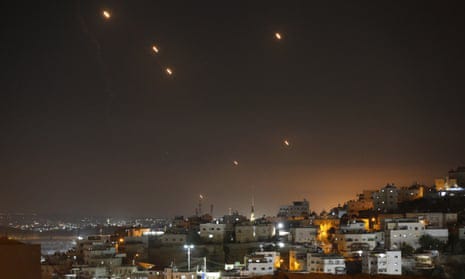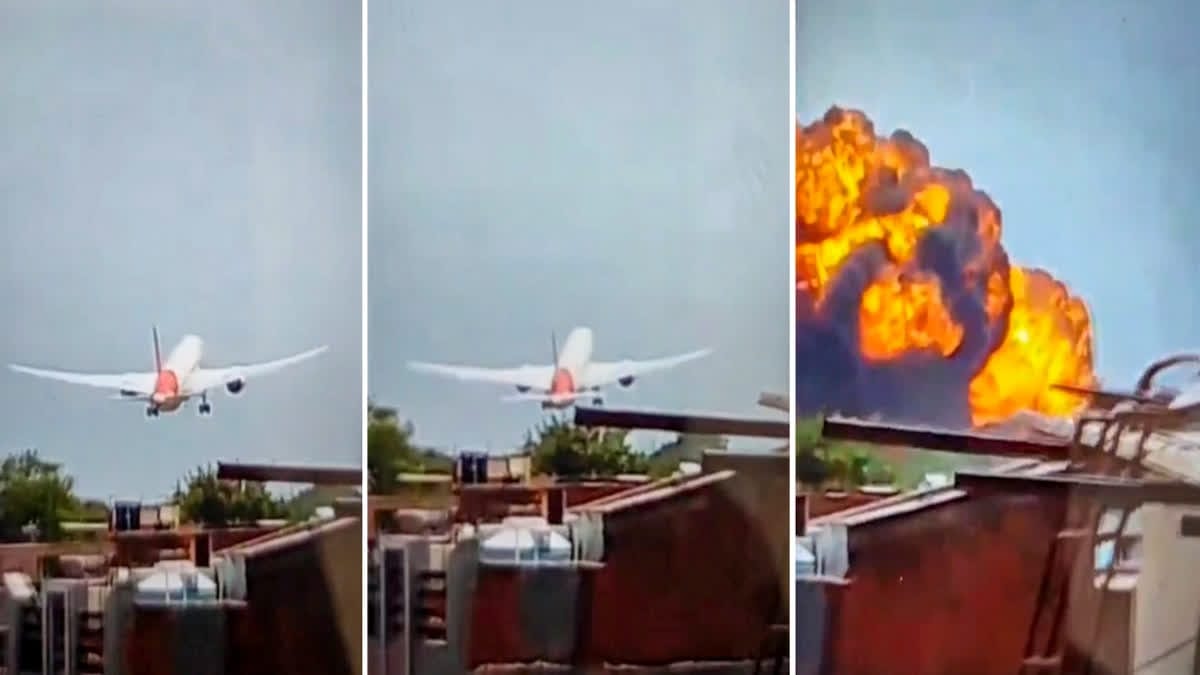
Today’s latest news update, tensions are back in the Middle East. Missile trajectories in regional skies, fires at oil facilities near Tehran and strikes on defense headquarters in Syria are making headlines. Iran and Israel have exchanged attacks in recent days, with Tehran reportedly firing Scud-class missiles at Israeli defense facilities. In retaliation, Israeli F-16 jets – and possibly stand-off munitions – hit Iranian oil infrastructure and defense headquarters. In retaliation, Israeli F-16 jets – and possibly stand-off munitions – hit Iranian oil infrastructure and defense headquarters.
There are several reasons for the uproar now, including the failure of decades of deterrence. Iran’s nuclear ambitions in recent months. The US political winds are turning towards a hard line on Tehran. Israel’s swift action to defuse what it sees as an existential threat before it becomes more apparent. Yes—it matters. And fast. This is not just a headline moment, it is a pivot that could reshape alliances, weaponize energy markets, and redraw the battle lines from the Levant to the Strait of Hormuz.
All the points in this post
Israel-Iran Conflict Chronology of Events
Previous events had been escalating tensions, with reports of a bombing of a secret Iranian weapons facility near Damascus last month. Separately, Iranian proxies had attacked U.S. positions in Iraq. Neither Tehran nor Jerusalem wanted to back down—and both had taken action. Israeli strikes on Iran On June 10, Israeli aircraft allegedly targeted Iran’s defense headquarters and a related oil refinery near Tehran. Within 48 hours, Iran had fired multiple ballistic missiles – likely Shahab or Fateh-class – into southern Israel.
As of June 15, regional powers have scrambled jets. Saudi Arabia, with U.S. support, has scrambled F-15s. Transits for Gulf navies have increased. Diplomatic missions in Baghdad, Amman, Ankara and Abu Dhabi are buzzing for talks. New warnings come every hour.
The Targets Military Objectives and Civilian Concerns
What Iran says were hits, Tehran spokesmen claim, were aimed only at military assets, “missile batteries, radars and command posts.” Their description emphasizes precision targeting to avoid civilian areas. Israel’s objective, as reported by Tel Aviv, is to weaken Iran’s missile control and disrupt the delivery of enriched uranium – long seen as a precursor to further nuclear progress.
Unsuspecting locals could be affected by the damage to infrastructure. This echo of the precise targeting and collateral damage poses a classic challenge: can a high-tech military carry out a strategic strike without creating a wider humanitarian crisis? So far, both sides have claimed yes – but it is too early to verify.

Military Capabilities and Strategy
Iran’s missile arsenal Iran’s influence in the region is largely dependent on the depth of its missiles. Tehran can strike deep into Israel and US forces stationed in Iraq. Israel’s Strike Capabilities F-15I and F-16I “Supha” jets armed with Jericho ballistic missiles and stand-off cruise missiles make up the Israeli Air Force. Support for electronic warfare from Unit 8200 enhances mission success.
Regionally, this war is not symmetrical. The United States provides Israel with logistical support, air superiority, and satellite support. Iran uses missile depth and proxy networks (Hezbollah, IRGC-Quds Force). When cyber warfare and SEAD (Suppression of Enemy Air Defenses) are added, it becomes a multi-layered chessboard. Proxy actors can be drawn in. And any misstep—literal or diplomatic—could potentially escalate into a larger conflict.
International Reactions
As expected, the United States was able to respond first, diplomatically and militarily. The Pentagon confirmed that it had increased its surveillance aircraft over the Gulf and redirected a carrier group closer to Israeli waters. The foreign ministry issued a statement calling on both countries to “immediately de-escalate tensions,” while also reaffirming Israel’s right to self-defense. Europe, on the other hand, is walking a fine line. France, Germany and the UK have called for restraint but have condemned Iran’s missile launch as “unacceptable.”
China and Russia How did Russia respond? Predictably, it has been calculated. Moscow maintains working relations with Israel and also maintains strategic ties with Tehran. The Kremlin’s foreign ministry has called for an “immediate cessation of hostilities” and warned that the escalating violence would “destabilise the entire region”. China, on the other hand, has insisted on a diplomatic solution and expressed concern about “unilateral military action”. Riyadh is said to have consulted closely with Washington, fearing the spread of missiles or opportunism by the Houthis.
Turkey’s position remains ambivalent. President Erdogan has condemned the violence, adding that Israel’s actions are “provocative and destabilising”. Despite the low level of trust between the two sides, Ankara could play a role as a mediator to increase its regional influence. Despite the fact that neither nation wants war, no one’s hands are clean on this varied response map.
Strategic Calculations and Risk of Escalation
Prevention or retaliation, let’s talk about the psychology behind the attacks. Israel’s military doctrine has long been guided by its “preemptive” policy, which involves attacking an adversary before a threat arises. However, every preemptive strike carries the risk of triggering a response, as Iran’s missile strikes attest. Iran’s retaliation, on the other hand, fits into its playbook: bold but not supreme. For Iran, any attack on its nuclear facilities or the outright assassination of high-profile commanders could lead to regional infighting, including with Hezbollah or the Houthis.
This limited conflict could escalate into a regional firestorm. Syria could become a battlefield for Iranian and Israeli proxies. Militia attacks could erupt in Iraq. And U.S. forces in the region would be forced to choose sides, whether they were obvious or not. At least four flashpoints are now poised to ignite. If diplomacy does not intervene soon, the Middle East could face its most dangerous war in decades—one that could have nuclear implications.
Economic and Energy Shockwaves
Brent crude prices rose by about 7% within hours of the Israeli attack on Tehran’s oil facilities. World energy markets do not react well to missiles flying over oil fields. Iran sits at the top of the world’s largest proven reserves – and any disruption would send chills through global supply chains. If the conflict intensifies, analysts are already predicting a sustained price increase. Asian importers – particularly India and China – have been quietly drawing down stocks and rerouting shipments. Although it carries about 20% of global oil trade, the Strait of Hormuz has yet to become a target. However, it is being closely watched.
Iran has previously threatened to close it if its sovereignty is challenged. If that happens? Oil prices could double within a week. We are talking about a recession-level shock to the fragile global economy. Already, U.S. Navy ships are shadowing commercial ships in the Gulf, and some ports have temporarily suspended operations. The ripples will affect everyone—gas station operators, airlines coordinating routes, and logistics companies delaying shipments.
Stock markets have reacted predictably, panicking. Tel Aviv’s index fell 4% in early trading. Tehran’s already volatile stock market is down more than 6%. The Israeli shekel has weakened against the dollar, while safe-haven currencies like the yen and Swiss franc have risen. Even if the bombs stop flying tomorrow, the economic aftershocks are only beginning to reverberate.
Cyber Warfare and Hybrid Strategies
Missiles are just one part of the war. The cyber battlefield is just as important—and it’s already heating up. Within 24 hours of the Israeli airstrikes, Iranian hackers launched coordinated DDoS attacks on Israeli government and media sites. Israeli cyber units reportedly disabled several radar installations near Isfahan. As in all modern warfare, information is as much a weapon as a missile. Fake casualty videos, AI-generated rhetoric, and verifiable information from “anonymous sources” are some of the conflicting narratives popular on social media. State-backed media on both sides are spinning the story hard.
Cyberattacks can spiral out of control. If one side hacks into the power grid or air traffic control system, civilian lives can be endangered in ways that trigger traditional retaliation. Imagine a virus uploaded by a military hacker causing an airport blackout. Boom—the war escalates. Cyberattacks may seem bloodless, but they are deadly serious. And as we’ve seen in Ukraine and Gaza, they’re often the silent prelude to a dynamic attack.
Humanitarian Dimensions
Civilian displacement and casualties Although Iran and Israel say their attacks are “technically perfect,” the war rarely spares civilians. In border towns where the missile threat is high. Displacement is slowly starting. Hundreds of people in border towns in both countries have moved to safer areas, with fears of further escalation. If Iran’s infrastructure is severely damaged and basic services disrupted, scores of civilians could try to flee across Iraq or the Persian Gulf. Aid agencies are warning of funding shortfalls.
Doctors Without Borders, the United Nations High Commissioner for Refugees (UNHCR) and the Red Cross are preparing to expand their operations, but security concerns could prevent them from reaching those most in need.
What Comes Next: Possible Scenarios
Can diplomacy save it from collapse? Maybe, but the window is closing now. Israel wants guarantees that Iran will not continue nuclear proliferation, Iran wants Western assurances that it will not be hit again. The likely exit is still through backdoor diplomacy. If Washington and Beijing can coordinate, even remotely, they may be able to steer this conflict toward negotiations rather than confrontation. Compensation for civilians increases. Three tiles, it’s a domino effect. The danger is there. Both sides are capable, committed, and cornered.
Let’s not rule out the possibility of surprises. A sudden change in leadership tone, a secret deal brokered by a third party, or even a ceasefire under pressure could happen. History testifies that diplomacy can break down even during times of conflict. We’ve seen it before, the Camp David Accords, the JCPOA, the Abraham Accords. No matter how dark the situation seems, pressure creates moments of clarity. The only question is whether both sides see peace as a means to survival—or as surrender?
THE END
We are witnessing a moment of conflict for the Middle East in the next ten years. This not only involves a war between two countries, but also energy security, regional dominance, and global stability. Israel and Iran have been at odds for years, and both have been fighting each other. However, as history shows, escalation is never inevitable. It is chosen. Let’s hope that cold-bloodedness prevails, and the missiles stop flying before we all pay the price.






